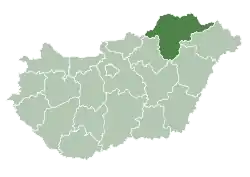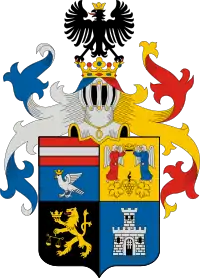Sárospatak
Sárospatak (German: Potok am Bodroch; Latin: Potamopolis; Slovak: Šarišský Potok or Blatný Potok; lit. 'Muddy Stream or Muddy Brook on the Bodrog') is a town in Borsod-Abaúj-Zemplén County, northern Hungary. It lies 70 kilometres (43 miles) northeast from Miskolc, in the Bodrog river valley. The town, often called simply Patak, is a cultural centre, a historical town and a popular tourist destination.
Sárospatak | |
|---|---|
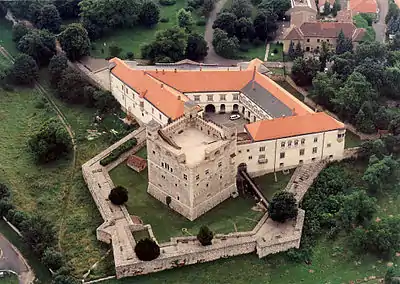 Sárospatak Castle | |
 Flag  Coat of arms | |
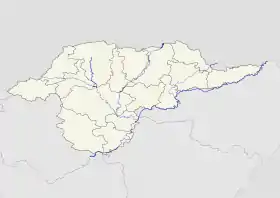 Sárospatak  Sárospatak | |
| Coordinates: 48.31897°N 21.56636°E | |
| Country | |
| Region | Northern Hungary |
| County | Borsod-Abaúj-Zemplén |
| District | Sárospatak |
| Area | |
| • Total | 100.5 km2 (38.8 sq mi) |
| Population (2017)[1] | |
| • Total | 11,886 |
| • Density | 120/km2 (310/sq mi) |
| Time zone | UTC+1 (CET) |
| • Summer (DST) | UTC+2 (CEST) |
| Postal code | 3950 |
| Area code | (+36) 47 |
| Website | sarospatak |
History
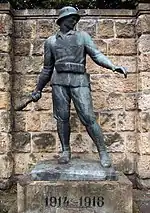
The area has been inhabited since ancient times. Sárospatak was granted town status in 1201 by King Emeric. In the Middle Ages it was an important place due to its proximity to an important trade route leading to Poland.
13th century
Its castle, built by Andrew II, is traditionally identified as the birthplace of his daughter Saint Elizabeth.
15th and 16th centuries
Sárospatak was elevated to the rank of free royal town by King Sigismund. In 1460, during the reign of King Matthias it received the right to hold a market. In the 15th and 16th centuries, it was owned by the Pálóczi (Pálóczy) family, until baron Antal Pálóczi was killed at the first Battle of Mohács in 1526, which precipitated a conflict between the family of his widow, born of the Perényi family, and the Pálóczi-related Dobó family. The Perényi family gained control of the castle, and it was in their possession until 1602, when it passed to the Dobó family.
17th and 18th centuries
Bálint Balassi, the most important Hungarian poet of the century married Krisztina Dobó at the castle; the bride was the daughter of István Dobó, who defended the castle of Eger against the Ottoman Turks. Later the castle was owned by the Rákóczi family. The residents of the town took an active part in the revolution and war of independence against Habsburg rule led by Francis II Rákóczi between 1703 and 1711.
College of Sárospatak
The Reformation began spreading into Hungary from this area. The first Protestant college, one of the most important colleges of Hungary at the time, was founded in Sárospatak in 1531. In 1650 Zsuzsanna Lorántffy, widow of George I Rákóczi prince of Transylvania invited the famous Czech educator John Amos Comenius to Sárospatak. Comenius lived there until 1654, as a professor of the college, and he wrote some of his most important works there. The college (since 2000 a faculty of the University of Miskolc) now bears his name.
Hutterite community
In 1631 Hutterites from Alvinc (today Vințu de Jos, Romania) came to Sárospatak to work on constructions.[2] In 1645 George I Rákóczi gave land to Hutterite families in the Héce area of Sárospatak. They came mostly from Csejte (today Čachtice, Slovakia).[3] According to Conrad Jacob Hildebrandt in 1656 there was a significant population of Hutterites numbering 200 people. They were predominantly craftsmen, but some also worked in the agricultural industry. The appearance of the Jesuits in the city in 1663 meant the end of the life of the community. The Jesuit, Johannes Grueber forced them to recatholisation.[4]
The Jewish community
Jews began to settle in the area in the first half of the 18th century. the Jewish community organized in the late 18th century. They had a rabbi and a jewish school, a yeshiva, and a "Talmud Torah".
In 1930, 1,096 Jews lived there and in 1944 there were 910 Jews.
In 1939, four Jewish families who did not have Hungarian citizenship were deported across the border. After the outbreak of World War II, wealthy Jews and members of the community administration were arrested and imprisoned in a concentration camp. In 1940, Jews were forbidden to sell wine and tobacco and to own radios.
From 1941, Sárospatak served as a center for forced labour within the Hungarian army. The recruited young Jews were mostly sent to Ukraine and some were employed in the construction of a nearby airport.
On April 15, 1944, a few weeks after the German army entered Hungary, a temporary ghetto was established in the city's Jewish school building where the wealthy among the local Jews were tortured to extort confessions about burying property. A few days later, they were transferred by train to the Sátoraljaújhely ghetto and from there sent to the Auschwitz extermination camp.[5]
Climate
| Month | Jan | Feb | Mar | Apr | May | Jun | Jul | Aug | Sep | Oct | Nov | Dec | Year |
|---|---|---|---|---|---|---|---|---|---|---|---|---|---|
| Daily mean °F | 26.1 | 29.8 | 39.7 | 50.4 | 60.4 | 65.3 | 69.6 | 68.0 | 60.6 | 50.4 | 39.0 | 31.1 | 49.3 |
| Daily mean °C | −3.3 | −1.2 | 4.3 | 10.2 | 15.8 | 18.5 | 20.9 | 20.0 | 15.9 | 10.2 | 3.9 | −0.5 | 9.6 |
| Source: [6] | |||||||||||||
Sights
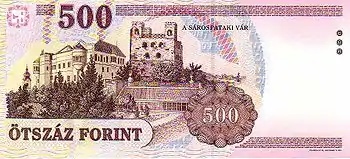
- Castle of Sárospatak (with Renaissance tower)
- Art Gallery of Sárospatak
Notable people
13th to 16th C.
- Elizabeth of Hungary (1207 – 1231), a princess of the Kingdom of Hungary.[7]
- Ladislaus IV of Hungary (1262 – 1290), king of Hungary and Croatia from 1272 to 1290.[8]
- Bálint Balassi (1554 – 1594), a Hungarian Renaissance lyric poet.[9]
- János Petki (1572 in Sárospatak – 1612 in Brassó), a Hungarian noble and poet, Chancellor of Transylvania, 1607-1608.
- John Amos Comenius (1592 – 1670) a Czech philosopher, pedagogue and theologian.[10]
17th C.
- Zsuzsanna Lorántffy (1602 in Ónod, Hungary – 1660 in Sárospatak) a Princess consort of Transylvania
- George II Rákóczi (1621 – 1660) a Hungarian nobleman and Prince of Transylvania (1648-1660).[11]
- Johann Grueber (1623, Linz – 1680, Sárospatak) an Austrian Jesuit missionary and astronomer in China
- Ilona Zrínyi (1643, Ozalj – 1703, Izmit) a noblewoman and heroine.
- Francis II Rákóczi (1676 – 1735) a Hungarian nobleman and leader of Rákóczi's War of Independence (1703–11).[12]
18th C.
- András Fáy (1786 – 1864) an Hungarian author, lawyer, politician and businessman.[13]
- Ján Chalupka (1791-1871) a Slovak dramatist, playwright, publicist and Evangelical pastor.
19th C.
- Lajos Kossuth (1802 – 1894) an Hungarian nobleman, lawyer, journalist, politician and statesman.[14]
- János Erdélyi (1814 in Nagykapos – 1868 in Sárospatak) an Hungarian poet, critic, author, philosopher and ethnographist.[15]
- Frigyes Ákos Hazslinszky (1818 – Eperjes, 1896) a Hungarian mycologist and botanist.
- Mihály Tompa (1819 – 1868), an Hungarian lyric poet, Calvinist minister and scientist.[16]
- Miklós Izsó (1831, Izsófalva, Hungary - 1875, Budapest) an Hungarian sculptor
20th C.
- Ferenc Berényi (Dévaványa, 1927 – Budapest, 2004) a Hungarian painter.
- Imre Makovecz (1935 in Budapest – 2011 in Budapest) an Hungarian architect
Trivia
- The ceiling of one of the small rooms of the castle is decorated by frescoes of roses. The participants of the Wesselényi conspiracy held their secret meetings in this room. In Latin the term sub rosa means both "under the rose" and "in secret".
- Because of its cultural significance, Sárospatak is sometimes referred as "Athens of the Bodrog".
- One of its secondary schools (Árpád vezér grammar school) was designed by Imre Makovecz.
Twin towns – sister cities
Sárospatak is twinned with:[17]
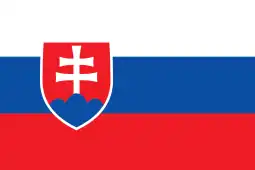 Bardejov, Slovakia[18]
Bardejov, Slovakia[18] Collegno, Italy
Collegno, Italy Eisenach, Germany
Eisenach, Germany Izvoru Crișului, Romania
Izvoru Crișului, Romania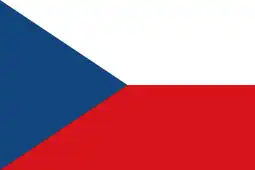 Jindřichův Hradec, Czech Republic[19]
Jindřichův Hradec, Czech Republic[19] Krosno, Poland
Krosno, Poland Soest, Germany
Soest, Germany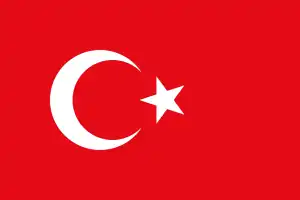 Tekirdağ, Turkey
Tekirdağ, Turkey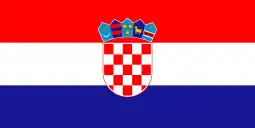 Ogulin, Croatia
Ogulin, Croatia Jasło, Poland
Jasło, Poland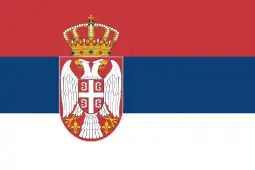 Trešnjevac, Serbia
Trešnjevac, Serbia
References
- Sárospatak, KSH
- [Vințu de Jos]
- "Kutatási jelentés".
- "A habánok nyomában Sárospatakon". 25 September 2014.
- The jewish community in Sárospatak On the website of the Museum of the Jewish People
- "Sárospatak". Retrieved 13 June 2023.
- . Encyclopædia Britannica. Vol. 9 (11th ed.). 1911. p. 287.
- Bain, Robert Nisbet (1911). . Encyclopædia Britannica. Vol. 16 (11th ed.). pp. 59–60.
- Bain, Robert Nisbet (1911). . Encyclopædia Britannica. Vol. 3 (11th ed.). p. 240.
- . Encyclopædia Britannica. Vol. 6 (11th ed.). 1911. p. 759.
- Bain, Robert Nisbet (1911). . Encyclopædia Britannica. Vol. 22 (11th ed.). pp. 867–869, see page 868, para 2.
George II., prince of Transylvania (1621–1660)....
- Bain, Robert Nisbet (1911). . Encyclopædia Britannica. Vol. 22 (11th ed.). pp. 867–869, see page 868, para 4.
Francis II., prince of Transylvania (1676–1735)....
- . Encyclopædia Britannica. Vol. 10 (11th ed.). 1911. p. 218.
- Headlam, James Wycliffe (1911). . Encyclopædia Britannica. Vol. 15 (11th ed.). pp. 916–918.
- . Encyclopædia Britannica. Vol. 9 (11th ed.). 1911. p. 734.
- . Encyclopædia Britannica. Vol. 26 (11th ed.). 1911. p. 1063.
- "Testvérvárosok". sarospatak.hu (in Hungarian). Sárospatak. Retrieved 29 May 2020.
- "Sárospatak Bártfa testvérvárosa lett". sarospatak.hu (in Hungarian). Sárospatak. 24 June 2016. Retrieved 29 May 2020.
- "Testvérvárosi szerződést kötött Sárospatak és Jindrichuv Hradec". sarospatak.hu (in Hungarian). Sárospatak. 18 June 2016. Retrieved 1 September 2021.
External links
- Official website in Hungarian
- Accommodation in Sárospatak
- The jewish community in Sárospatak On JewishGen website.
- Archaeological sites in Sárospatak
